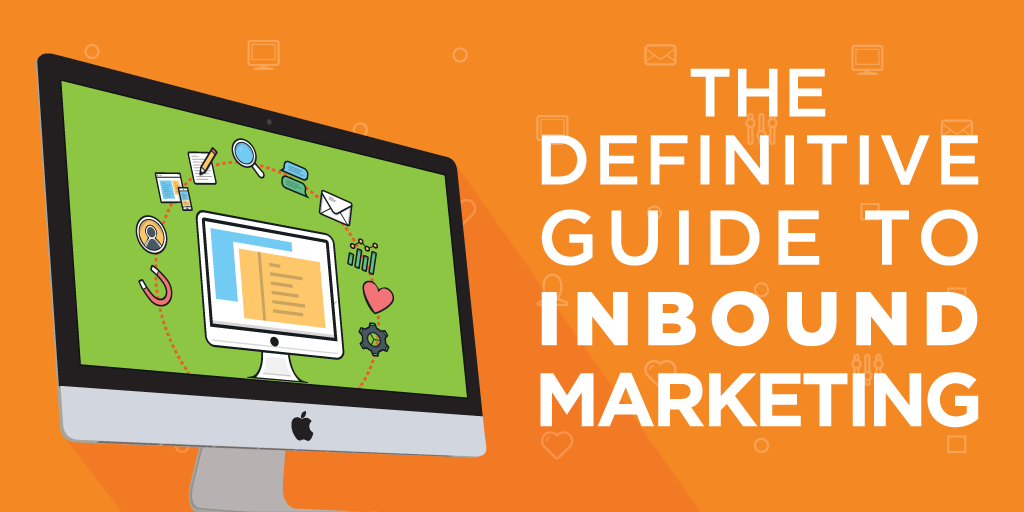10 Optimization Techniques For Sustainable Growth
by Keith Gutierrez on Sep 11, 2016
An effective long-term marketing strategy should be built on a foundation that supports sustainable growth.
While many growth hacking tactics can be used to jump-start growth, many do not provide growth for the long-term. In this article, we'll explore optimization techniques you can use to generate sustainable growth.
Eric Ries, author of "The Lean Startup," discusses building an "Engine of Growth." He refers to it as the mechanism start-ups use to achieve sustainable growth.
This excludes all one-time activities that generate a surge of customers but have no long-term impact.
These tactics can be used to jump-start growth but cannot be used as a model for sustained growth.
Ries points out that sustainable growth is characterized by one simple rule: "New customers come from the actions of past customers."
Here are 4 primary ways to drive sustainable growth:
- Word of mouth - A natural occurrence that happens as the result of the enthusiasm of satisfied customers.
- Side effect of usage - The desire to use a product or service, sparked by seeing others successfully using it first.
- Funded marketing and advertising—Marketing and advertising are funded by service or product sales revenue, not outside sources such as investment capital.
- Repeat purchase or use - Products or services designed to be purchased repeatedly.
Whether you're a start-up or have an established business, you must be focused on building a "growth engine."
Many areas in your business can be optimized to help you build sustainable growth around these four basic drivers.
Here are 10 optimization techniques I find extremely valuable for building your foundation.
10 OPTIMIZATION TECHNIQUES FOR SUSTAINABLE GROWTH
1. STRATEGY BEFORE TACTICS
Lead first with your philosophy and goals and then with a well-thought-out strategy to achieve them.
Even a start-up needs a solid framework before growing its business.
“BY FAILING TO PREPARE, YOU ARE PREPARING TO FAIL.” - BENJAMIN FRANKLIN
2. PRIORITIZE AND EAT THAT FROG
With your goals in place, you'll need to create a list of action items that need to be completed to help you reach them.
In many cases, quite a few action items need attention, so prioritizing them by their level of importance is key.
I'm a huge fan of Brian Tracy's ABCDE method, which you can learn about by watching the video below. In it, Brian discusses the "Eat That Frog" method, which involves tackling your biggest, most important task first.
3. CREATE A "STOP DOING" LIST
Remember the old phrase, "Less is More." I believe there is a ton of truth to that statement.
As a business owner or team leader tasked with building sustainable growth, it's easy to get caught up in the daily tasks of "working in your business" instead of "working on your business."
The goal should be to figure out how to do more with less, optimize your time, and always make time to improve your business.
"TIME IS OUR MOST VALUABLE ASSET, YET WE TEND TO WASTE IT, KILL IT, AND SPEND IT RATHER THAN INVEST IT." — JIM ROHN
So, before adding more items to your "To Do List," I recommend creating a "Stop Doing List." In his book "Virtual Freedom," Chris Ducker provides a great exercise called the "Three Lists To Freedom." It will help you create a solid "Stop Doing List," and it works like this:
- List all of the tasks you don't like doing.
- List all of the things you struggle with.
- List all the things you're doing every day that you shouldn't be doing. (This is the most important list to create.)
Once you've created your "Three Lists To Freedom," you can decide whether to continue to do these things, delegate or hire someone who can do them more efficiently, or stop doing them altogether.
4. BUILD A REPEATABLE AND SCALABLE PROCESS
Providing a "custom solution" can be a great way to build your business. However, it's best to tailor them to a specific market to make them repeatable and scalable.
“REPETITION IS THE MOTHER OF LEARNING, THE FATHER OF ACTION, WHICH MAKES IT THE ARCHITECT OF ACCOMPLISHMENT.” - ZIG ZIGLAR
Companies that build a repeatable and scalable process can optimize their time and deliver a better product or service because there are no unknown inefficiencies.
Due to the efficiency of the process, many products and services can be offered at a lower cost.
Building a repeatable and scalable process can help support the "Repeat purchase or use" method of sustainable growth
5. FOCUS ON HELPING RATHER THAN SELLING - ZMOT
Consumers are no longer at the mercy of being sold to. Instead, internet technology has empowered consumers to do their research and make their own purchasing decisions.
They will most likely choose the company that best shows how they provide the most value for the time and money. This is also known as the Zero Moment of Truth (ZMOT).
This shift in consumer behavior has fundamentally changed the way companies should handle their sales process.
The focus should now be helping consumers by being great listeners, communicators, and teachers.
Marcus Sheridan has revealed the greatest content strategy: "They Ask, You Answer!" What I love about the strategy is its simplicity.
The key is to be obsessive about capturing your customers' and prospects' questions.
YOU CAN EITHER ADDRESS THE QUESTIONS OF YOUR PROSPECTS OR NOT, BUT KNOW THIS: SOMEONE WILL - MARCUS SHERIDAN
This is a great optimization technique for supporting the "Word of Mouth" sustainable growth model.
In addition, time savings can be achieved by consistently directing your clients and customers to your educational content.
Related: How to Use Content in the Sales Process [Assignment Selling]
6. BUILD & OWN MARKETING ASSETS
Unlike traditional advertising methods such as radio, TV, print, and billboard advertising, which involve renting space for a period of time, your website, blog, and content offers can tremendously provide sustainable growth.
The best part about creating this type of content is that once you create it, it never goes away. Instead, it becomes an asset to your company that can consistently generate growth.
This great optimization technique works well for the "Funded marketing and advertising" method of sustainable growth.
While paid advertising may still be a profitable investment, in many cases, you can generate more qualified leads by building marketing assets first.
7. RE-INVEST IN YOUR PRODUCTS, SERVICES, AND CUSTOMERS
Another great optimization technique for consistent growth is re-investing in your products, services, and customers.
Re-investing in these areas helps support the "word of mouth" and "funded marketing and advertising" models of sustained growth. Focusing on delighting your customers is the best way to get them to create "buzz" about your brand.
The internet has also empowered marketers to listen to conversations on social networks and respond to them in real-time.
Being responsive is a great way to reinvest in customer service. The more you learn about your customers, the easier it is to delight them. Sometimes, it's as simple as reaching out to satisfy them.
8. DELIVER THE OPTIMAL USER EXPERIENCE
Oddly, you may be thinking about finding new ways to generate more traffic to your website.
You may feel that if more people just saw what you have to offer, they'd buy your products or services. This is most often a false feeling.
It would be best to attract people's interest in what you offer on your website. While I'm not discounting the importance of Search Engine Optimization (SEO), it's better to optimize for the overall user experience first.
This process starts offline first. Ensure you optimize the customer experience to the best of your ability.
Then, research to find out what's important to your buyers.
Then, develop your website to deliver the best user experience first, meaning that you're making it easy for your prospects to find the information they seek.
If you've optimized the user experience well and followed the best practices of on-page SEO techniques, you'll likely perform well in search.
9. ELIMINATE UNCERTAINTY
When facing challenges or something fails, it's best to eliminate uncertainty about why it happened.
In "The Lean Startup," Eric Ries explains his brilliant process of the "5 Whys" technique, which provides a process to find the root cause of the problem.
While following this process is a great way to improve your business, it can significantly impact the "word of mouth" and "side effect of usage" sustainable growth methods.
10. BUILD, MEASURE, AND LEARN
To consistently improve your sustainable growth models, focus on discovering new ways to improve your products and services and delight your customers.
Another lesson from "The Lean Startup" that Eric Reis recommends is to start by setting a specific set of hypotheses to prove or disprove them as quickly as possible.
One of the most essential hypotheses always includes these questions: What will the customer care about? How will they define the quality of our products and services?
While this activity is designed for start-ups, established businesses can benefit from these lean methodologies.
THE FUNDAMENTAL ACTIVITY OF A START-UP IS TO TURN IDEAS INTO PRODUCTS, MEASURE HOW CUSTOMERS RESPOND, AND THEN LEARN WHETHER TO PIVOT OR PERSEVERE. ALL SUCCESSFUL START-UP PROCESSES SHOULD BE GEARED TO ACCELERATE THAT FEEDBACK LOOP. - ERIC REIS
CONCLUSION
Many optimization techniques can support sustained growth in your organization.
Proper planning, organization, management, and discipline must focus on activities that add value. It's knowing that you're working on the right things.
What are some of the optimization techniques you've found to drive sustainable growth for your business?
Please share them with us in the comments section below.
Share this
Sign up for blog updates!
Related Stories

19 Marketing Trends You Need to Know for 2022

What is Inbound Marketing? The Definitive Guide for 2021
